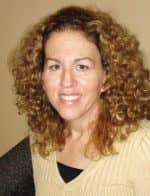
Judy O’Rourke
The ability to inspect significant sections of a patient’s genome, to ID particular risk potentials and tailored avenues of treatment, is within the lab’s grasp and could affect diagnosis and treatment decisions for patients the world over. The opportunity to gain greater insight into cancer’s genetic pathways is expected to be a key to unlocking future developments in oncology diagnostics and treatment. Next-generation sequencing (NGS) is a technology that may be instrumental in helping chart this path.
Switching gears, while digital pathology can increase access to pathologists and other specialists, facilitate precision medicine, and enhance quality and efficiency for patients’ pathology services, some roadblocks stand in the way of its widespread use, such as a lack of standardization of tissue sample prep in the histology lab and lack of training, knowledge, and understanding of the entire process by some key personnel who use it. Successfully incorporating digital pathology in the histology lab is essential to expanding molecular (FISH) testing, and efforts are under way to include more molecular testing in the histology lab to support the further differentiation of patient diagnosis. The process can be expected to make pathologists more productive and efficient, yielding more information and time for them to develop personalized diagnoses and therapies for patients. The shortage of well-trained and qualified techs in the field of histology will have to be addressed, as presently, training for new technologists is often insufficient to prepare them for real-world work situations.
The chronic and widespread staff shortages in clinical labs may be aligned with a perfect storm as quality control (QC) is poised to face a sea change; QC is being eclipsed by risk-based analysis as the industry standard. The risk-based programs are considered by many experts to be a better option, providing a science-based improvement in quality protocols. Their complexity, however, may accentuate the learning curve, and labs will need to allocate the time, expertise, and funds to avail themselves of new tools and training options, adding additional complexity to the existing problem of insufficient qualified techs.
The Clinical and Laboratory Standards Institute (CLSI) is presenting a workshop in September in Houston, and November in Boston, and the American Association for Clinical Chemistry (AACC) will be presenting a Webinar in November. See e-newsletter CLPrime 8/29/12 for details.
At a time when unemployment and underemployment are staggering, and often the only jobs available for college grads are those they could have qualified for with a GED, if this industry could latch onto interested minds and give them room to grow, this could avert the storm and turn out to become a win-win.
Judy O’Rourke
Editor, CLP
, (619) 659-1065




